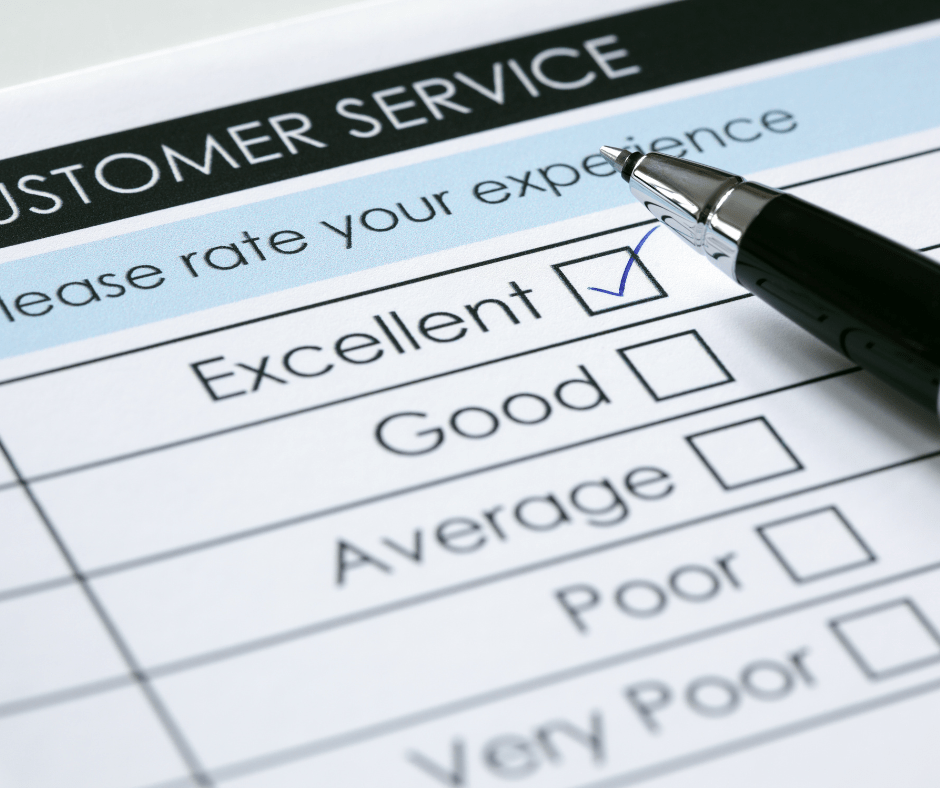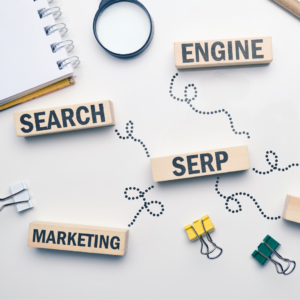Do you need help making sense of your retail data analytics? We understand that, with so much information coming in from different sources, it can take time to figure out where to start. But don’t worry because we’re here to help! We know that data analytics is essential for success in today’s fast-paced industry, and we want to help you unlock the full potential of your data. You can gain a significant competitive advantage and enhance the overall customer experience by gaining valuable insights into consumer behaviour and market trends. Join us as we explore the world of retail data analytics, offering strategies and tips to help you overcome obstacles and boost your business to new heights!

Overview
Did you know that data analytics provides an in-depth overview of the retail industry, highlighting its significance and practical applications? It emphasises the systematic process of examining, cleaning, and modelling data to extract valuable insights supporting decision-making. By utilising data analytics, retailers can optimise their operations, improve customer experiences, and make strategic business decisions, ultimately gaining a competitive edge in the dynamic retail landscape. The article explores various aspects of retail analytics, including customer data collection methods, the role of data analytics software, and common challenges retailers face. It concludes by promoting Off-Grid’s Data Analytics Courses as a valuable resource for retailers looking to gain practical skills and knowledge in leveraging data analytics for business success.
What is Data Analytics?
Data analytics is a systematic process that involves examining, cleaning, transforming, and modelling data to extract valuable insights and support decision-making. It’s like a treasure hunt where you dig deep into vast sets of information to find meaningful conclusions. Data analytics is a game-changer in the retail industry that provides retailers with the necessary tools to optimise operations, enhance customer experiences, and make strategic business decisions. By converting raw data into actionable intelligence, retailers can stay ahead of the curve and gain a competitive edge. So, embrace the challenge of the treasure hunt and unlock the potential of data analytics to reach new heights of success!
Why is Data Analytics Important in Retail?
Did you know that data analytics is essential in the retail sector? It helps retailers uncover valuable insights from the vast data generated daily. By using analytics, retailers can understand consumer behaviour, preferences, and trends in a comprehensive way. This information can help businesses tailor their strategies, manage inventory, personalise their marketing efforts, and improve efficiency. In a world where customer expectations constantly evolve, data analytics is the key for retailers to stay ahead of the race and data-driven culture. Retailers can enhance competitiveness and ensure long-lasting success in the ever-changing retail landscape.

Retail Analytics Explained
The above information is stiff, right? Alright, let’s talk about it a little more: the superhero of the retail world – Retail Analytics! So, it’s not just about crunching numbers; it’s like having a retail Jedi at your side, helping you make sense of the data information. Imagine your sales transactions, customer interactions, and inventory levels having a big party, and retail analytics is the excellent DJ making sure everything is groovy.
So, what’s the deal with retail analytics? It’s like having a crystal ball, but instead of predicting the future, it helps you better understand your past and present. From figuring out the perfect price tag for that new gadget to making sure your shelves are stocked with the latest trends, retail analytics is the secret sauce.
Think of it as your retail BFF, whispering insights like, “Hey, your customers love discounts on Fridays,” or “Time to restock those unicorn-shaped pillows – they’re flying off the shelves!” So, buckle up for a joyride through the world of retail analytics; it’s not just about numbers; it’s about turning data into your business’s stand-up routine!

Importance of Customer Data
Customer data isn’t just random information; it’s the key to unlocking personalised experiences, tailored marketing strategies, and long-lasting customer relationships. From purchasing behaviours and preferences to demographics and feedback, this data is the secret sauce that transforms a business from good to unforgettable. Explore with us into the depths of why customer data is the heartbeat of successful retail operations. Check out the following sections!

How to Collect Customer Data in Retail?
Are you tired of guessing what your customers want? Learn how to effectively collect customer data in retail and gain valuable insights into your target audience. Take advantage of the opportunity to improve your business strategy and boost your bottom line. Follow these proven methods for collecting customer data today!
By using a POS system
Yes, your point-of-sale system can be a valuable tool for collecting customer data in retail. It processes transactions, captures purchase history, tracks product popularity, and helps you understand customers’ buying patterns. By analysing this data, you can gain insights into what products are selling well, who your customers are, and their preferences. This information can help you tailor your marketing strategies, improve your product offerings, and enhance the customer experience. So pay attention to the power of your point-of-sale system!
Website Cookies
Embrace cookies as your online allies! They efficiently track user behaviour on your website, revealing invaluable insights into what products customers are interested in, how long they stay, and what motivates them. Don’t hesitate to leverage this powerful tool for your business growth!
Surveys
Are you interested in gaining a deeper understanding of your customers? If so, consider conducting surveys, as they are a highly effective means of engaging with your customers and learning about their experiences, preferences, and desires. The best part is that you don’t have to treat them to coffee to get their valuable feedback. Don’t hesitate to give surveys a try and see for yourself how they can benefit your business.
Social Media Platforms
Social media isn’t just for memes; it’s a goldmine for customer insights. Social media platforms have recently become a valuable source of customer insights. By analysing the interactions on social media, businesses can gain a deeper understanding of their customers’ preferences, dislikes, and aspirations. The information gathered from social media can help businesses make informed decisions about their products, services, and marketing strategies. So, it’s worth investing time and effort into analysing social media interactions to gain a competitive edge in the market.
Collecting Customer Data by Asking Them Directly
A friendly chat can reveal more than you think! Why? When understanding your customers’ needs and preferences, a simple but effective strategy is to engage with them during their shopping journey. Take the time to have friendly conversations and ask questions about their experiences, preferences, and expectations. By actively listening to their responses, you’ll gain invaluable insights into what motivates them to make purchases, what areas of your business could use improvement, and how you can better cater to their needs. Remember, a little conversation can go a long way in building solid relationships with your customers and enhancing their overall shopping experience.
Use of Data Analytics Software
Data analytics software is a powerful tool to help you turn raw data into meaningful insights. By analysing your data, you can uncover patterns, relationships, and trends that were previously hidden from view. With these insights, you can make informed decisions and confidently take action. The best part is that you don’t need to be a data scientist to use it – the software does the heavy lifting for you. So, whether you’re running a business, conducting research, or simply trying to understand your customers better, data analytics software can be your assistant and guide in the world of data.

Retail Analytics Challenges
The world of retail analytics can be challenging at times, but every challenge is an opportunity to learn and grow. With the right mindset and approach, we can overcome these obstacles and unlock great insights that can help us succeed in the data-driven world of retail. Let’s face the challenges below, learn from them, and emerge as victorious retailers.
Collecting Customer Data
You probably already know that customer data is precious for retail analytics. However, collecting this data can be challenging, and it’s essential to do so in a way that respects customer privacy while still gaining valuable insights. Let’s work together to create innovative and ethical data collection methods that can make this challenge successful!
Managing Customer Data Privacy
In today’s world, customers are more aware than ever of the importance of their privacy. Earning and maintaining their trust is crucial for any business. To achieve this, we must implement robust security measures, be transparent in our practices, and commit to protecting sensitive information. By prioritising privacy concerns, we can build strong relationships with our customers and create a foundation of trust and loyalty.
Complying With Data Protection Standards and Laws
Navigating the complex world of data protection laws can be overwhelming, but it’s an excellent opportunity to showcase your brand’s commitment to ethical practices. By prioritising data integrity, you will build a trustworthy brand and set your business up for success in today’s world, where data protection is becoming increasingly important.
Boosting Customer Interaction From Omnichannel
The omnichannel world can be overwhelming, but it’s essential for retail success. Using the right technology and insights ensures you can effortlessly connect with your customers across different channels. Let’s work together to turn this challenge into your competitive edge and provide customers with a seamless and enjoyable shopping experience.
Supporting Sales And Marketing Demands and Forecasting
The heartbeat of retail success lies in anticipating market trends and meeting customer demands. Overcoming the challenge of supporting sales and marketing demands requires predictive analytics and cutting-edge forecasting techniques. Let’s turn this challenge into a strategic advantage, positioning your business as a trendsetter in the market.
Making Use Of The Latest Technology
In a tech-savvy era, staying ahead demands embracing the latest technological advancements. Overcoming the challenge of integrating the newest technologies into retail analytics is not just an option but a necessity. Let’s turn this challenge into an opportunity for innovation, ensuring your business rides the wave of technological progress.

Most Common Data Problems in Retail
Retail is an ever-changing industry, and data is the key to success. It has the power to revolutionise businesses and create unique customer experiences. However, some data problems can hold us back and prevent us from reaching our full potential.
Let’s explore these challenges together and find solutions to overcome them!
Siloed, Static Customer Views
Picture this: a customer who shops online and in-store, but your data systems treat them as separate entities. Siloed, static customer views are a roadblock to personalisation and customer-centric strategies. It’s time to break down the walls between data silos, creating a dynamic, 360-degree view of your customers. Unifying customer data ensures every interaction is a personalised masterpiece, enhancing customer satisfaction and loyalty.
Time-Consuming Vendor and Supply Chain Management
Navigating the complexities of vendor and supply chain management can be challenging, like trying to find your way through a maze without a map. The processes involved can be time-consuming, which can hinder efficiency and responsiveness. However, there is good news! By embracing technology, you can streamline these operations, from order processing to inventory management. This way, you can save time and enhance the overall agility of your retail operations, ensuring that your shelves are always stocked with what your customers love.
Analysis Based on Historical Data
Relying solely on historical data is akin to driving forward while only looking in the rearview mirror. The retail landscape is ever-changing, and real-time insights are crucial to stay ahead. Shift the focus towards predictive analytics, leveraging real-time data to anticipate trends and customer behaviours. By embracing forward-looking analysis, your business becomes proactive rather than reactive, setting the stage for innovation and sustained success.
One-Time Data Projects
Would treating data projects as one-time efforts mean missing out on ongoing value? To get the most out of your analytics, it’s essential to establish a data-driven culture that views analytics as an evolving, integral part of operations. Rather than focusing on one-off projects, investing in solutions that provide ongoing insights can help keep your retail strategy agile and responsive to changing market dynamics. So, let’s ensure we’re continuously improving and getting the most out of our data!
Ready to Take the Next Step?
Data analytics transforms the retail sector by providing a strategic advantage and enhancing customer experiences through insights into consumer behaviour, preferences, and market trends. It empowers businesses to optimise operations, make informed decisions, and stay competitive in the dynamic retail landscape. Off-Grid Data Analytics Courses serve as the best choice, offering hands-on, real-world experiences tailored to the challenges of the retail sector, ensuring your success beyond theoretical concepts. What are you waiting for? Enrol now!
Data Analytics: FAQs
What is the main disadvantage of using data analytics in retailing?
The main disadvantage of using data analytics in retailing is the potential breach of customer privacy as their information becomes visible to companies, which may lead to the exchange of customer databases for mutual benefits. Silos are also a significant obstacle in fully utilising data analytics in the retail industry.
How is data analytics used in retail?
Data analytics in retail helps companies understand customer buying needs, forecast demand, and manage inventory accordingly.
How can retailers overcome data collection challenges?
To overcome data collection challenges, retailers can invest in robust infrastructure and automated tools for data integration, cleansing, and validation while emphasising the importance of data quality to avoid misinformed decisions and operational inefficiencies.
What are the benefits of predictive analytics in supply chain management?
The benefits of predictive analytics in supply chain management include optimised inventory, improved demand forecasting, and cost-saving opportunities, ultimately leading to enhanced efficiency and competitiveness.
How can retailers ensure data accessibility and compliance with data protection regulations?
To ensure data accessibility and compliance with data protection regulations, retailers should implement security measures, centralise data repositories, and seek guidance from legal professionals or data privacy consultants to comply with regulations such as GDPR. It will help protect customer data and ensure compliance with applicable laws and regulations.
Author
-

As a seasoned Content and Product Strategist, Benjamin leverages a unique blend of creativity and analytical prowess to craft compelling articles. With a passion for delivering impactful content experiences, he specializes in guiding brands towards strategic success through thoughtful planning and meticulous execution. Armed with a keen understanding of consumer behaviour and market trends, he drives engagement and fosters meaningful connections between audiences and brands.
View all posts




